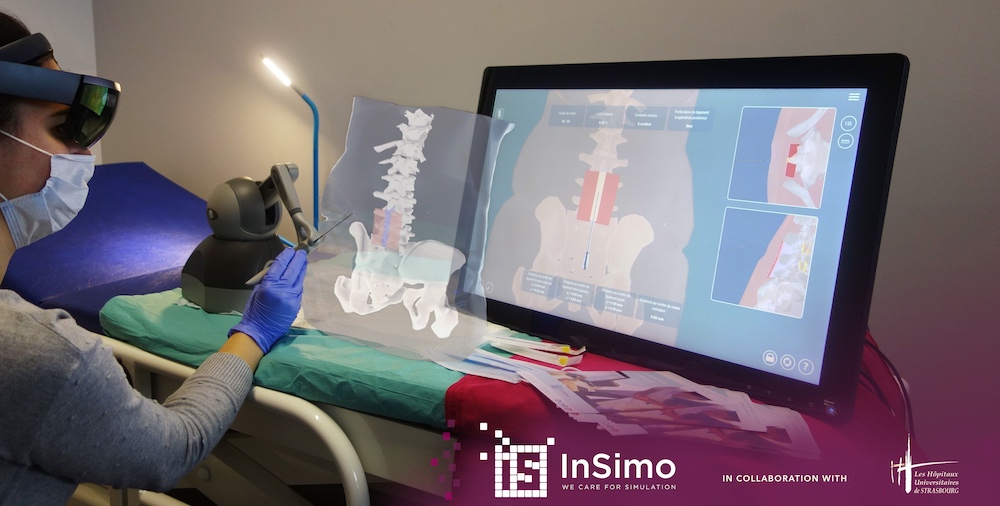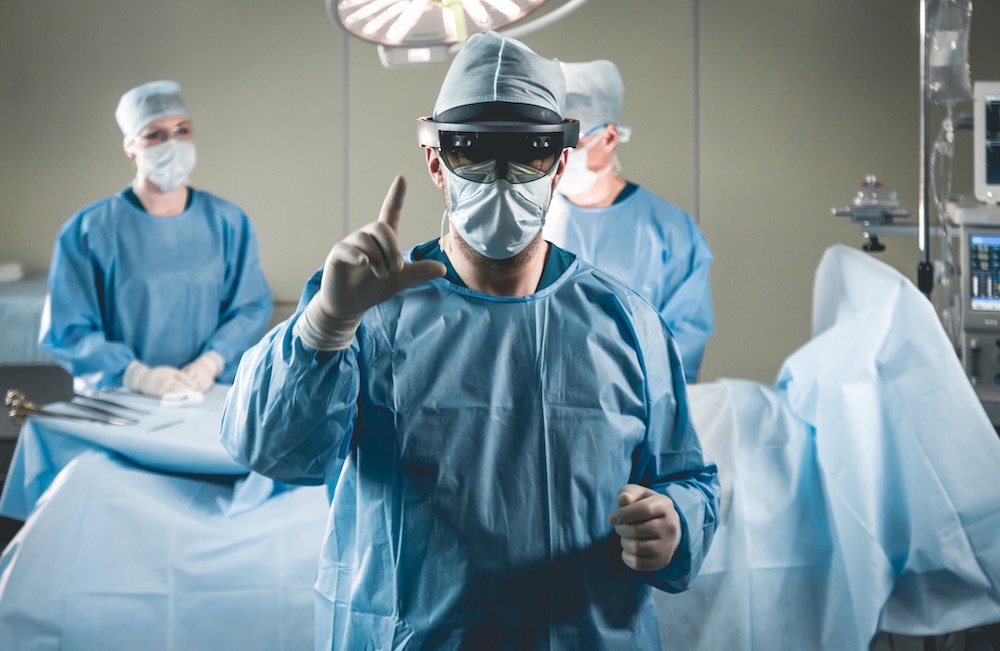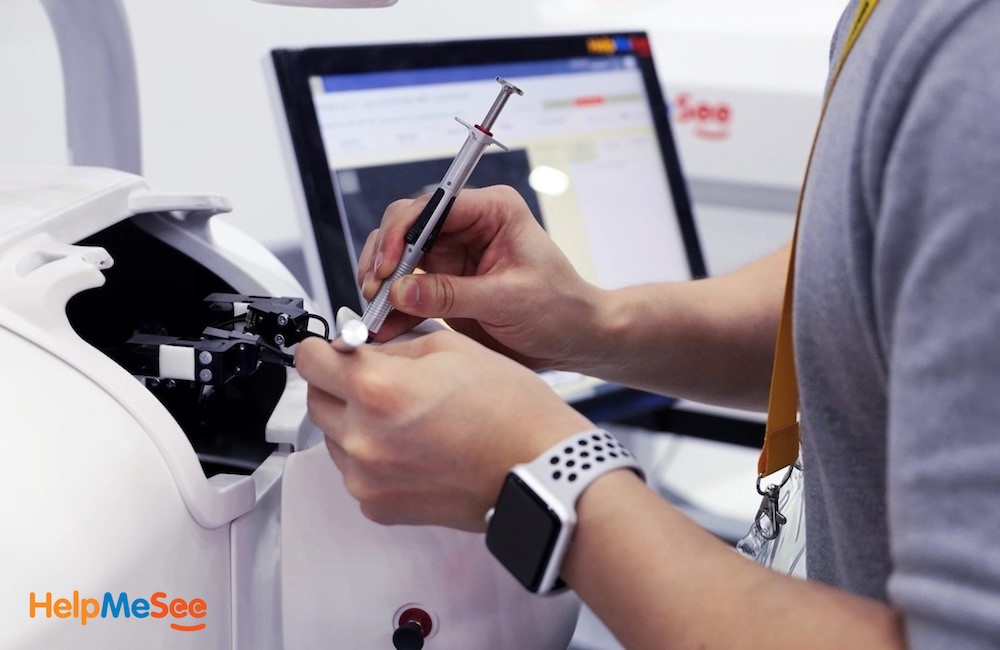Formed in 2013 out of the Strasbourg Civil Hospital medical environment in France, InSimo is a company specialized in the design and development of specialized software for medical and surgical simulation training. The biomechanical simulation at the heart of InSimo’s applications reproduces high fidelity organ behavior with high precision, as well as their associated surgical procedures and medical gestures. Today, we take a look at some of the unique design solutions the InSimo team is working on to meet pedagogical and technical needs by leading clinical institutions around the world; including cataract surgery, surgical planning, and medical gesturing.
More About InSimo
InSimo’s mission is to foster the creation of a new generation of medical simulators, which are highly realistic and faster to develop, which ultimately enable a broader opportunity for clinical educators on a global scale. Their core business is to reproduce organs and surgical procedures with a high level of realism which also enables for haptic force feedback. The result is unique simulators supporting a wider range of application and clinical usefulness. With expert support from leading academic institutions, such as the French National Institute for Research in Digital Science and Technology (Inria), InSimo designs solutions that meet precise pedagogical and technical needs to improve the training of medical and surgical procedures but also the development of clinical reasoning through the learning of surgical planning.
High Fidelity Manual Cataract Surgery Simulation for the HelpMeSee Foundation
On-demand simulation is an integral part of InSimo’s activity, which develops simulation software for third parties according to their unique needs (industrial, educational, etc.). InSimo is notably involved in the development of an high fidelity cataract surgery simulator for the HelpMeSee foundation, whose objective is to train a large number of surgeons by 2030 in order to eradicate cataract blindness, which affects 20 million people worldwide. InSimo helped support the development of an up an innovative surgical simulator software for manual small incision cataract surgery (MSICS). Hand in hand with Moog for hardware development and SenseGraphics for realistic rendering, their aim is to provide the most advanced surgical simulator ever done. This common work will provide an high fidelity simulator that will allow the education of 30 000 surgeons to MSICS.
InSimo is also involved in an European R&D project focused on the development of an advanced generic software offer for simulation-based robotics surgical training. The company’s ambition here is to address MedTech robotics companies with a valuable custom development offer inherited from many years of research and industrial collaborations.
diSplay: Desktop Surgical Planning Patient Specific Simulator
diSplay is a desktop simulator dedicated to clinical reasoning development on virtual patients that allows medical students to define the best surgical strategies and foresee their consequences. Starting from real patients CT-scans, InSimo provides interactive 3D anatomical models, and uses biomechanical simulation to realistically reproduce the behavior of organs and surgical interactions. Therefore, with diSplay, students can test, visualize and compare the consequences of different surgical approaches on the anatomy of a given patient and choose the best one.
The different surgical modules provide various procedures corresponding to several surgical specialties: oesogastric surgery and bariatric surgery are already available, and soon urology surgery, hepatic surgery and vascular surgery will enrich the simulator. The InSimo vision is to offer a complete interactive surgical atlas to plan any surgery on any organ. diSplay offers an experience from discovering the patient case all the way to visualizing the results of the chosen surgery by way of setting up the operating room. Students can analyze CT-scan images and section views of their patient, and then choose the optimal surgical approach between laparotomy, laparoscopy and endoscopy, depending on the presented pathology. At the end of the planning, they can visualize the consequences of the chosen strategy and assess its efficiency.
diSplay is a tool destined for medical faculties and simulation centers, to animate tutorials or illustrate lectures. diSplay is already available for sale in the form of a subscription to be designed according to the client’s needs, including one or several surgical modules and customization options (integration of personal patient data, custom curriculum design).
During April 2020, to contribute to the fight against COVID-19, InSimo developed a new module as part of the diSplay simulator, to train medical professionals to use lung ultrasound to track pulmonary lesions, helping in the diagnosis and monitoring of COVID-19. This new module introduces a new feature in diSplay: the use of ultrasounds, that will soon be available for other specialties.
Sim&Care: Critical Medical Gesture Training in A/R wit Haptic Feedback
Sim&Care is the first hybrid simulator allowing students to train in augmented reality for medical procedures involving needle insertion without any risk for the patient. The student manipulates a virtual needle and feels the resistances associated with passing through the different tissues (skin, ligaments, bone contact) thanks to a force feedback interface. Thanks to augmented reality, the anatomy of the virtual patient overlays on a real person (for example another medical student playing the role of the patient), enabling the use of elements of the reality that don’t need to be reproduced (a real person with whom have a real conversation ; a real hospital room to train in the appropriate environment).
At the crossroads of role-play game and virtual reality, this simulator allows students to practice and develop both the technical skills and patient support necessary for the success of this type of gestures. Until now, the development of this simulator has been focused on the lumbar puncture procedure, but ultimately, it will cover numerous daily medical gestures involving needle insertion, such as infiltrations, epidurals, different methods of anesthesia. It should be available by the end of the year 2020, and will be distributed as a software. The hardware required (3D system haptic interface, and Microsoft Hololens) can be purchased separately if not already owned.








